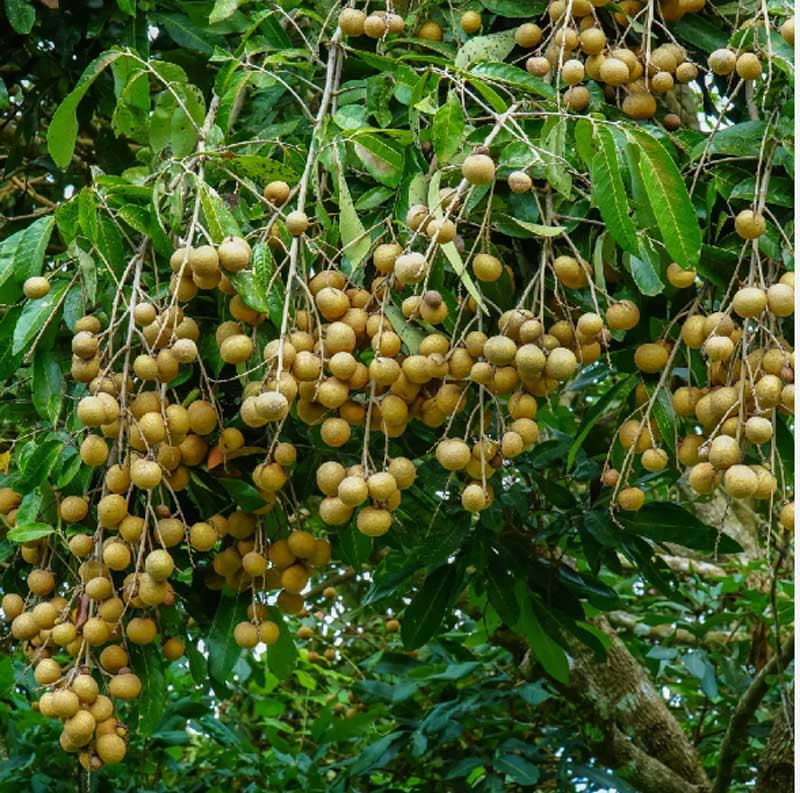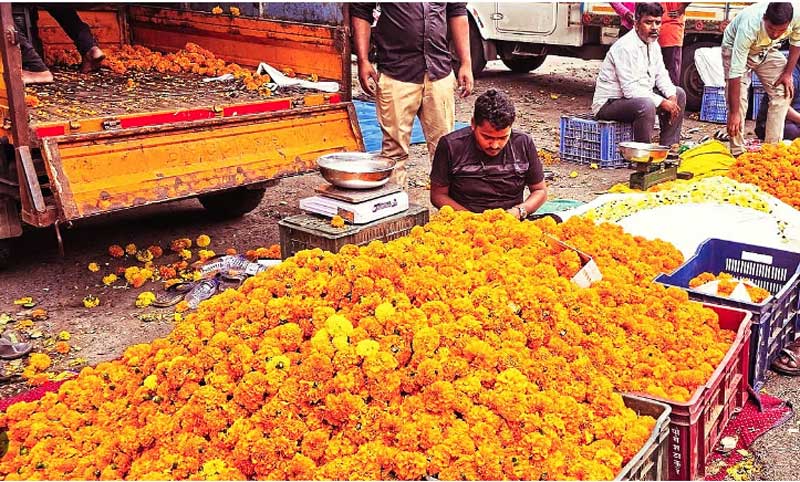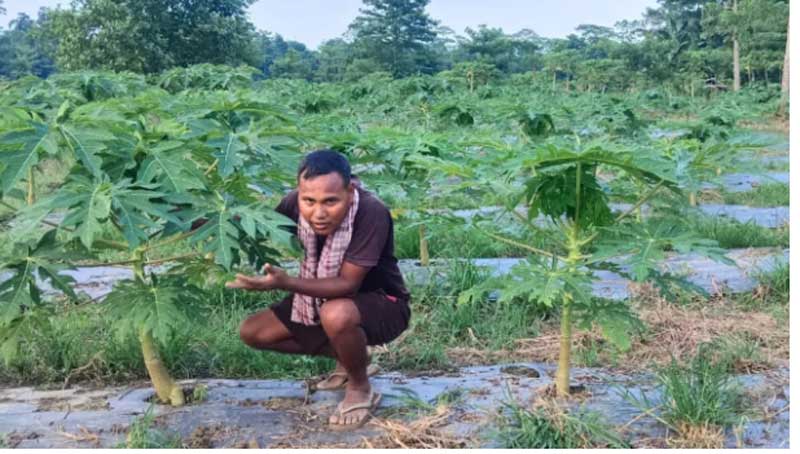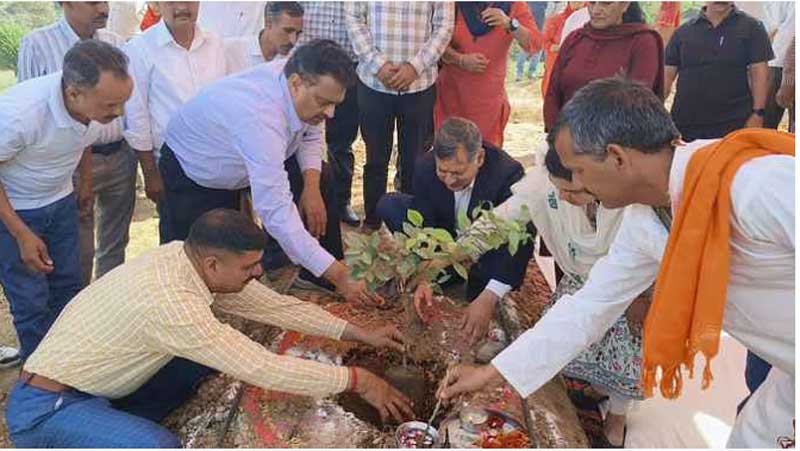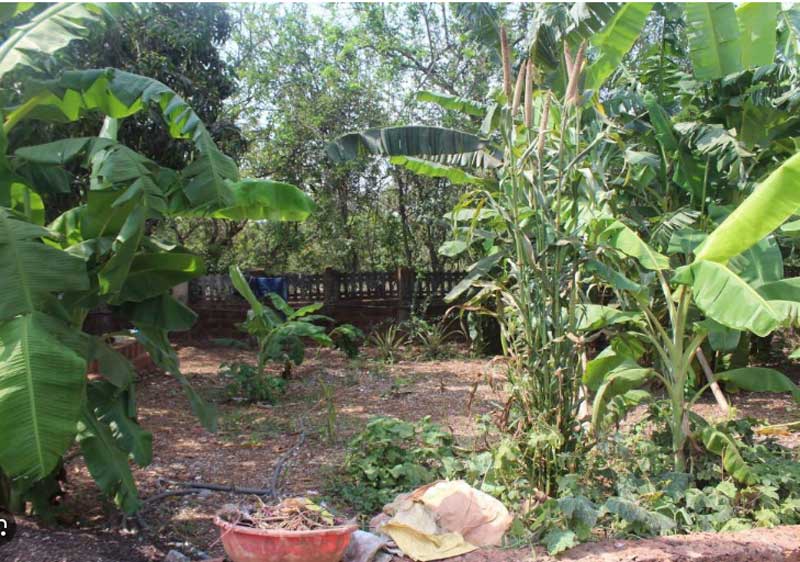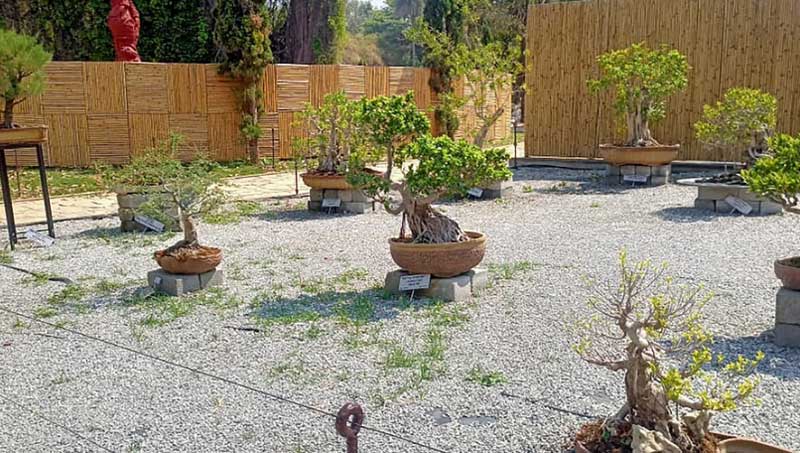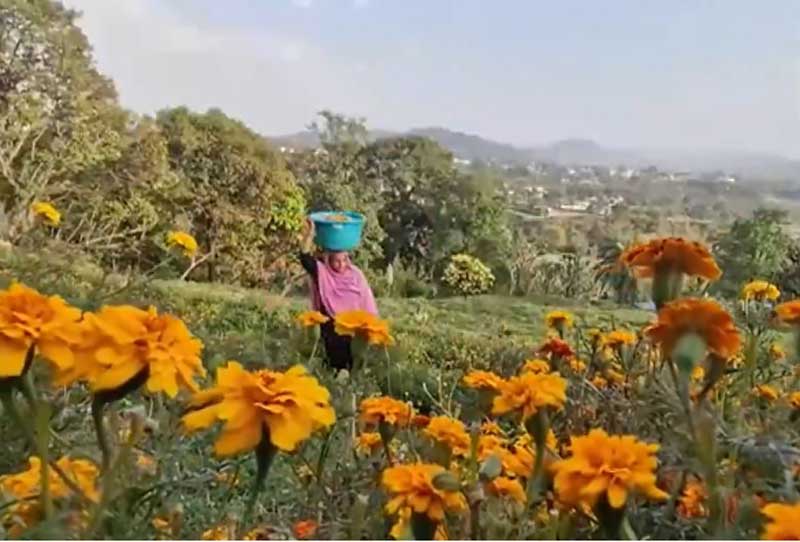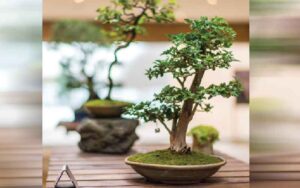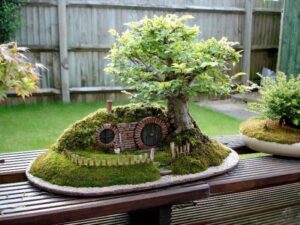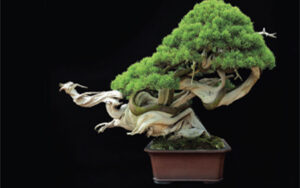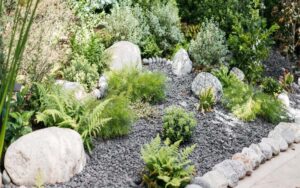Bonsai Technique: An exclusive sector in the landscape gardening industry
New Delhi/Itanagar: The word Bonsai is derived from Japanese, ‘bon’ means, ‘shallow pot’ and the ‘sai’ means ‘plant’ which is translated as ‘tray planting’. Bonsai is an art of growing trees, proportionately in small containers, occasionally in combination with rocks of many forms, by treating them with certain techniques in order to reproduce in miniature the lordly appearance of large and aged trees or landscape as found in nature. In recent days, the demand for bonsai’s is growing rapidly in leaps and bounds and has attained the status of an exclusive sector in the landscape gardening industry.
Styles of Bonsai:
There are many styles in bonsai, which have been developing over the ages. The following are the principal classical bonsai styles.
- Formal upright style (Chokkan): In this style branches grow symmetrically and horizontally around the upright straight trunk.
- Informal Upright (Mayogi): In this style plants retains a very natural appearance with the help of curving nature of the trunk. The branches get smaller in size towards the top growing also in the edge of the curves.
- Oblique/Leaning trunk style (Shakakn): The trunk leans to one side, branches are positioned horizontally, shooting out in all directions. The surface roots clearly visible in the side opposite to the lean.
- Windswept style (Fukinagashi): This differs from previous style that branches grow on one side of the trunk only. This gives the impression of the blowing continually from the direction.
- Broom style (Hokidachi): This style having the similarity in appearance to unturned broom. It spreads the branches in the shape of a fan, may occupy half the total height of the tree. The trunk is upright.
- Cascade style (Kengai): The branches grow out over the edge of the container chosen for this style is high enough to show off cascade effect to best advantage.
- Multiple trunks style or Clump shaped (Kadudaki): Trunks are allowed to grow a single root, which has put several shoots. The result of this is a little group of trees. Generally, they should make up an odd number but if only trunks appear, they should of different sizes.
- Raft style (Ikuabuchi): This style creates an effect of fallen trunk, which has put out roots downward, and branches upward. The final impression, which is quite original, is one of the groups of individual plants all spring from a horizontal trunk.
- Woodland (Yoseue): In this fascinating style, in a single container a number of all individual plants of the same species are laid out in a correctly proportioned manner.
- Twisted trunk style: The trunk diminishes size toward the top and gives the appearance of twisting in upon itself; the branches break out in all directions.
- On the rock: The piece of rock is places appropriately in the container to be embraced eventually by the roots of the bonsai. This however sinks into the soil below. Once the little tree starts growing and putting new roots in to small cavities in the rock, one can get so called “rock planting”.
- Mame bonsai/Mini bonsai/Disc bonsai: The plants are often not more than 8 – 15cm high (3 – 6 inches) and grow in containers no bigger than a tumbler.
Characteristics of plants suitable for bonsai
The suitability of plants to develop a bonsai plant depends on various factors.
- The plant should be hardy so that it can be grown in a small container for many years with all the manifestations of a living plant.
- The trunk should develop a natural appearance.
- The branches should grow in natural but artistic forms.
- The growth of the plant and appearance should harmonious with the shape of the container. 5. The miniature plant showing seasonal variations in growth and flowering is a very interesting feature of bonsai.
- Plants of low height and strong trunk, thick at the base are good as bonsai.
Environmental conditions: Temperature, humidity and light are the three main factors controlling habitat. Regular and constant high temperature (20 – 24ºC) is ideal for bonsai plants. Ideal humidity level for indoor plants is 40 – 50%. Light is primary importance for all the plants and indoor location bonsai. During the day time, most indoor plants require as minimum between 400 to 1000 lux light intensity. If the natural light is deficient it can be boosted with artificial light. The lamps should be placed 65 to 80cm from the bonsai plants.
Soil: A good soil mixture for bonsai must supply its needs of water, mineral and oxygen to the roots at least a year. Its texture must also be such as to encourage sufficient drainage of surplus water to avoid water logging and rotting of the fine roots and other hand be able to retain adequate water to enable the plant that to absorb a constant supply.
The following media composition can be used for bonsai:
- Garden soil: FYM: Brick pieces (2-4 mm thickness) in 3:2:2 ratio
- Garden soil: FYM: Sand in 3:3:3 ratio
- Garden soil: Leaf mould: Sand in 3:3:3 ratio
- Garden soil: Leaf mould: Brick pieces in 3:3:2 ratio
Pots or containers for bonsai
The pots and containers used for bonsai vary in material, shape and size. Small ceramic or terracotta pots and containers of square, rectangular, oval or round shape are the best for bonsai. Sometimes small cement containers are also utilized for this purpose but these are not convenient to handle because of their heavy weight.
The choice of the shape and colour of the container depends upon the style and the type of plant used for bonsai. Usually terracotta and light colours are preferable. The rectangular and oval shaped containers are ideal for most of the bonsai styles. The round or square container is suitable for growing a single plant in its centre unlike the other shapes in which the plant is placed on one side of the container.
Time of planting
The ideal time for planting bonsai is February-March or July-August. However, the best time to start it is before the new buds open during spring. The temperate species like cherry, peach and plum are planted in spring (Feb.-March) before the new leaves appear on the plant. Potting of bonsai should not be done in winter or in severe hot months.
Potting and repotting
For starting a bonsai from the natural stunted plant or from a dwarf plant obtained from a nursery, it is necessary to prune the roots. Generally one-third of the roots is cut off and the tap root also may be pruned if there is an abundant growth of fibrous, lateral roots. The unnecessary branches are removed before planting. The basic principle in bonsai culture is to restrict and slow down the growth of the plant by selective pruning of roots and branches. However, at the same time, it is necessary to provide just adequate but, balanced nutrition and regulated watering for proper and healthy but slow growth of the bonsai. The method of planting in the pot or container and the training of the plant will depend upon the style of bonsai. The old bonsai requires repotting after 2 or 3 years depending upon the plant species and its growth. The repotting is done in the same way as the potting.
For repotting following steps has to be followed…
- To separate the root ball, plant from the container, first cut the wire that will be holding the tree to the pot. First turn the container, tap it sharply with your first and lift it from the root moss.
- Place the root ball on the plain surface, remove the top layer of soil with plenty stick and loosen along roots that encircles the sides and bottom of the root ball. Eliminate thick long roots with few fibrous roots, shorten the surface roots.
- Clean the original container, keep the screening over drainage hole and place the container on flat surface and proceed with the potting. Then place the trimmed plant in the container, the plant should sit comfortably in the container, trim the roots around the sides and the space between side and bottom should be 1 inch of space between the root ball and inner surface of the container.
Special practices in bonsai
Pruning: Pruning is essential operations used in restricting the size and retains the shape of bonsai. First pruning is undertaken at the time of original potting of trees then further pruning will become necessary to shorten the branches, which have become too long. Pruning may be done when the plant awakening from dormancy and at the time of repotting to remove unnecessary and dead branches and shorten excessive growth. Most flowering plants may be pruned after the blooms have fallen.
Trimming: Trimming is a process, which must continue throughout the lifetime of bonsai and in many cases it is performed almost the year round. By this technique the tree retains its shape and the small branches become finer developing in to delicate tracery of fine twigs, besides which the leaves become smaller in size and more proportionate. After trimming the new buds break out from the remaining nodes and these grown into finer twigs with smaller leaves. Selected series of trimming would be necessary in the monsoon season when new growth takes place.
Leaf trimming: This is a technique employed to stimulate the growth of new fine twigs, thereby increasing the foliage and also reducing the size of the leaves. It must be performed on only strong healthy plants after a month of regular fertilizing. Leaves on weak branches are untouched. Leaf trimming is not carried out on flowering trees as the embryo; flower buds may be present inside the buds and would be stimulated to out of season blooming. Once in a year during April – August, remove the leaves completely from the plants. In this way effect of late season resting period is stimulated but the plant encouraged by heat will sprout new shoots. Plenty of water, sunlight be provided as soon as new buds grow.
Wiring: Main objective of wiring is to get desired shape of the bonsai, it is necessary to train and shape it by means of external support, using a copper or aluminium wire. This produces the desired effect more quickly than recycling completely on pruning. The wire is made of copper or aluminium and varies in thickness depending on which part is being used. It is thicker for the trunk and main branches and finer for smaller branches and shoots. Support wire should always be anchored either to the soil, the trunk and the container or to another tree. It should be attached in a regular spiral manner going from bottom to top and normally starting from side of the tree. If slight twisting is introduced in the direction of the spiral, bending a branch will be easier.
Nutrition: Fertilizers either powdered or liquid form suitable for indoor bonsai. They can be either applied in the form of organic fertilizers or inorganic fertilizers. A mixture of NPK or liquid manure prepared with oilcake (neem or mustard) may be applied once a week after about a month of potting but not during the active growth or dormant stage of the plant. The application of bonemeal or superphosphate is useful in flowering while for fruiting add a little potash also to the potting medium.
Watering: Regular and judicious watering is required but overwatering and water logging should be avoided. Watering is beneficial at the time of flowering but not in bougainvillea as frequent watering results in shedding of flowers. Conifers like pine and juniper require less water that other species.
Plant species suitable for bonsai
Trees: Anthocephalus cadamba, Bombax malbaricum, Adenanthera pavonica, Brassia actinophylla, Butea monosperma, Callistemon lanceolata, Ceiba pentandra, Erythrina cristagalai, Ficusnegalensis, F. reliogiosa, F. infectoria, Pinus carica, Jaccaranda mimosifolia, Kigelia pinnata, Tabebuia chrysantha, Thespesia papulina, Punica granatum, Delonix regia, Malphigia glabra etc.
Shrubs: Hibiscus rosa-sinensis, Hamelia patens, Jatropa podagrica, Murraya exotica, Carisa caranda, Bougainvillea sps., Camellia japanica, Schfflera arborícola.
Climbers: Combretum, Hiptage madhablata, Golden shower, Morning glory
Conifers: Juniperus prostrata, J. chinensis, Cupresses sempervirans, Juniperus horizantalis, Pinus roxburghii, Pinus khasiana
Succulents: Adenium obesum, Crassula sps.
Fruit plants: Pomegranate, tamarind, apple tree, citrus
(By Kalkame Ch. Momin, V. Bhargav, Arun Kumar Ph., Nilay Kumar and T. Yatung – Central Agricultural University, Pasighat, Arunachal Pradesh)

